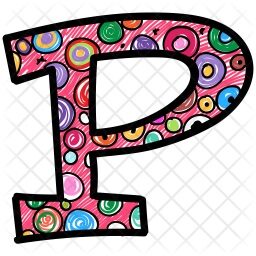In Tkinter, the Frame widget acts as a container to group other widgets. When combined with the grid layout manager, Frame widgets provide a powerful way to structure complex and organized graphical user interfaces (GUIs).
Understanding Frames
A Frame is essentially a rectangular region within a window. It’s primarily used for:
- Grouping related widgets: This helps in organizing the GUI logically.
- Applying layout management to a subset of widgets: You can use different layout managers (
pack,grid,place) within different frames. - Visual separation: You can add borders and padding to frames to visually distinguish sections of your GUI.
The Power of Grid within Frames
The grid layout manager is ideal for arranging widgets in a table-like structure of rows and columns. When you apply grid to widgets within a Frame, you gain fine-grained control over their positioning within that specific container.
Basic Example: Grid within a Frame
import tkinter as tk
from tkinter import ttk
root = tk.Tk()
root.title("Frame and Grid Example")
# Create a Frame
content_frame = ttk.Frame(root, padding="10")
content_frame.grid(row=0, column=0, sticky=(tk.W, tk.E, tk.N, tk.S))
root.columnconfigure(0, weight=1)
root.rowconfigure(0, weight=1)
# Widgets within the Frame using grid
name_label = ttk.Label(content_frame, text="Name:")
name_label.grid(row=0, column=0, sticky=tk.W, padx=5, pady=5)
name_entry = ttk.Entry(content_frame)
name_entry.grid(row=0, column=1, sticky=(tk.W, tk.E), padx=5, pady=5)
email_label = ttk.Label(content_frame, text="Email:")
email_label.grid(row=1, column=0, sticky=tk.W, padx=5, pady=5)
email_entry = ttk.Entry(content_frame)
email_entry.grid(row=1, column=1, sticky=(tk.W, tk.E), padx=5, pady=5)
submit_button = ttk.Button(content_frame, text="Submit")
submit_button.grid(row=2, column=0, columnspan=2, pady=10)
root.mainloop()
In this example:
- A
ttk.Framenamedcontent_frameis created and placed in the root window usinggrid. Thesticky=(tk.W, tk.E, tk.N, tk.S)ensures it expands to fill the available space in its grid cell. - The root window’s row and column 0 are configured with
weight=1, allowing thecontent_frameto resize when the main window is resized. - Labels and entry fields are placed within
content_frameusing thegridlayout manager, specifying their row and column. stickyis used within the frame’s grid to align and stretch widgets within their cells.columnspanis used to make the “Submit” button span across two columns.padxandpadyadd padding around the widgets for better visual spacing.
Nesting Frames and Grids
You can nest frames to create even more complex layouts. Each frame can have its own layout manager, allowing you to combine the strengths of different approaches. For instance, you could have a main window using grid, and within a specific cell of that grid, you could place a Frame that uses pack to arrange buttons horizontally.
Example: Nested Frames with Grid
import tkinter as tk
from tkinter import ttk
root = tk.Tk()
root.title("Nested Frames and Grid")
# Main Frame
main_frame = ttk.Frame(root, padding="10")
main_frame.grid(row=0, column=0, sticky=(tk.W, tk.E, tk.N, tk.S))
root.columnconfigure(0, weight=1)
root.rowconfigure(0, weight=1)
# Input Frame (within main_frame)
input_frame = ttk.LabelFrame(main_frame, text="Input Details", padding="10")
input_frame.grid(row=0, column=0, sticky=(tk.W, tk.E), padx=5, pady=5)
name_label = ttk.Label(input_frame, text="Name:")
name_label.grid(row=0, column=0, sticky=tk.W, padx=5, pady=5)
name_entry = ttk.Entry(input_frame)
name_entry.grid(row=0, column=1, sticky=(tk.W, tk.E), padx=5, pady=5)
# Button Frame (within main_frame)
button_frame = ttk.Frame(main_frame)
button_frame.grid(row=1, column=0, sticky=tk.E, pady=10)
ok_button = ttk.Button(button_frame, text="OK")
ok_button.pack(side=tk.LEFT, padx=5)
cancel_button = ttk.Button(button_frame, text="Cancel")
cancel_button.pack(side=tk.LEFT, padx=5)
root.mainloop()
In this nested example:
- A
main_frameusesgridto manage its content. - An
input_frame(aLabelFramefor visual grouping) is placed within themain_frameusinggrid. Widgets insideinput_frameare also laid out usinggrid. - A
button_frameis placed below theinput_frameusinggrid. Widgets insidebutton_frameare arranged horizontally usingpack.
